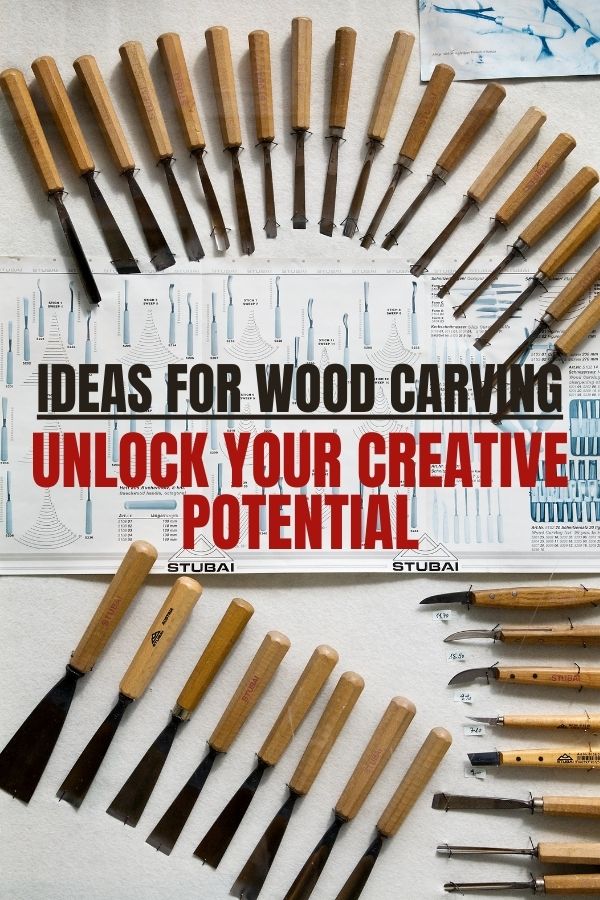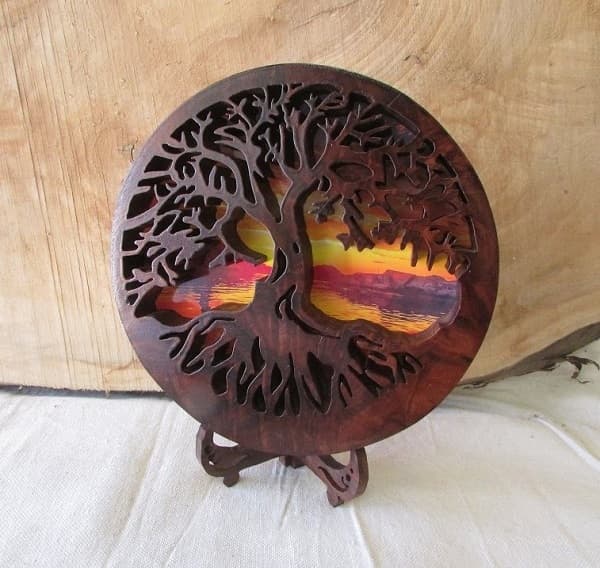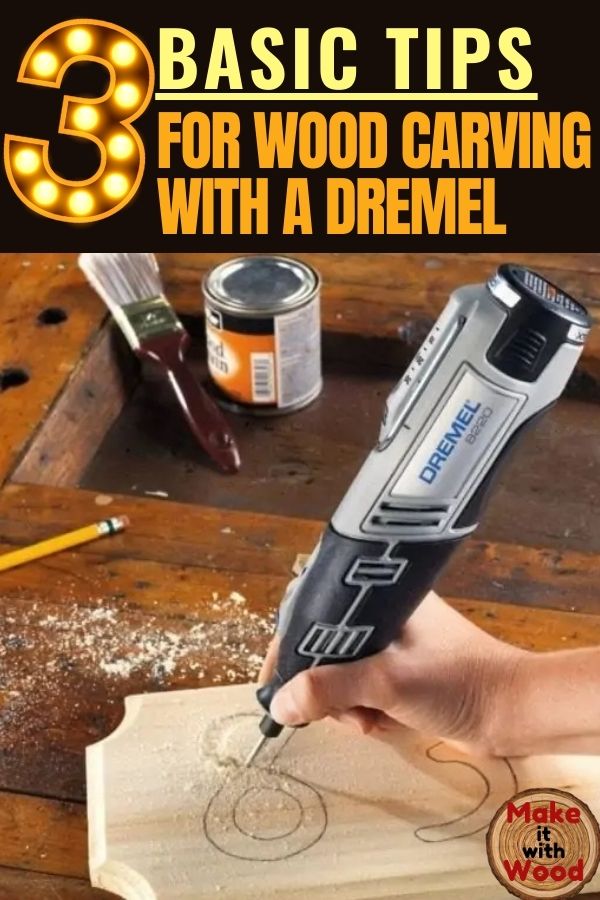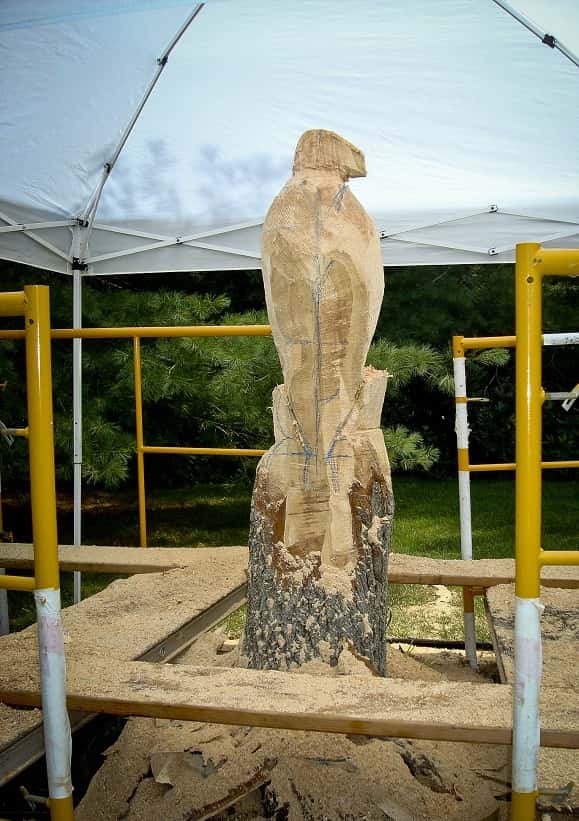Ideas for Wood Carving: Unlock Your Creative Potential

Ideas for Wood Carving
Beginner Wood Carving
Wood carving is a fascinating and fulfilling craft that allows you to transform a simple piece of wood into a work of art. Whether you are a beginner or an experienced woodworker, wood carving offers a wide range of possibilities to unleash your creativity and explore your artistic potential. In this article, we will delve into some ideas and techniques to help beginners get started with wood carving.
Before embarking on your wood carving journey, it is essential to gather the necessary tools. A basic wood carving toolkit typically includes chisels, gouges, a carving knife, a mallet, sandpaper, and a carving glove for safety. Investing in high-quality tools will make your carving experience more enjoyable and produce better results.
Once you have your tools ready, it’s time to choose a suitable wood for your carving project. Softwoods like pine and basswood are great options for beginners, as they are easy to carve and readily available. Avoid using hardwoods until you gain more experience and confidence in your carving skills.
Now that you are equipped with the right tools and materials, let’s explore some beginner-friendly wood carving projects that will help you develop your skills:
Wood Carving Projects
1. Whittling a Simple Spoon:
Whittling a spoon is an excellent project for beginners as it allows you to practice basic carving techniques such as shaping, carving curves, and refining details. Start with a small piece of softwood and gradually shape it into a functional and aesthetically pleasing spoon. Remember to pay attention to the ergonomics and functionality of the spoon while maintaining its artistic appeal.
2. Carving a Decorative Keychain:
Keychains are small and versatile projects that can be customized to suit your preferences. Design a unique keychain by carving intricate patterns, shapes, or even small figurines. This project provides an opportunity to work on miniature carvings and experiment with different techniques, such as relief carving or chip carving.
3. Creating a Relief Carving:
Relief carving involves carving a design that stands out from the background, creating a three-dimensional effect. Start with a simple design or pattern, such as a floral motif or a geometric shape, and gradually carve away the background to create depth and dimension. This project allows you to explore the art of shading and adding texture to your carvings.
4. Sculpting a Wildlife Figure:
If you have a passion for animals or nature, sculpting a wildlife figure can be a rewarding wood carving project. Choose a specific animal that interests you, such as a bird, deer, or bear, and study its anatomy and characteristics. Use reference images and sketches to guide your carving process and bring the animal to life in wood.
5. Carving a Decorative Walking Stick:
Walking sticks not only serve a functional purpose but also offer ample room for artistic expression. Carve intricate patterns, symbols, or even a narrative story along the length of the walking stick. Consider using different wood species to enhance the visual appeal and contrast of your carving.
These are just a few examples of beginner-friendly wood carving projects. Remember to start with simple designs and gradually challenge yourself with more complex and detailed carvings as you gain confidence and experience.
Woodcarving Ideas
Coming up with unique and innovative wood carving ideas can sometimes be a daunting task. To help unlock your creative potential, here are some inspiring wood carving ideas to explore:
1. Nature-Inspired Sculptures:
Take inspiration from the natural world around you and carve sculptures or figurines that depict elements of nature such as flowers, leaves, animals, or landscapes. Capture the intricate details and beauty of the natural world through your wood carvings.
2. Mythological Figures:
Delve into the realm of mythology and carve figures based on mythical creatures, gods, or heroes from different cultures. This allows you to incorporate storytelling and symbolism into your wood carvings, giving them a deeper meaning and connection to ancient folklore.
3. Abstract Art:
Embrace the freedom of abstract art and carve unique shapes, patterns, and forms that challenge traditional representations. Experiment with different textures, angles, and proportions to create visually stimulating and thought-provoking wood carvings.
4. Functional Sculptures:
Combine artistry with functionality by carving sculptures that can serve practical purposes. For example, carve a wooden lamp, a decorative bowl, or a wall-mounted coat rack. This allows you to integrate your wood carvings seamlessly into everyday life.
5. Collaborative Carvings:
Engage with other artists or woodworkers to create collaborative wood carvings. This can involve each individual contributing a segment or element to a larger, unified piece. Collaborative carvings provide an opportunity to learn from others, share ideas, and create something truly unique together.
6. Custom Wooden Signages:
Carve personalized wooden signages for yourself or others. This can include family names, house numbers, or inspirational quotes. Adding intricate details, such as ornamental borders or relief carvings, can further enhance the visual appeal of the signage.
7. Replicating Famous Sculptures:
Take inspiration from renowned sculptures and recreate them in wood. This can be a fascinating and challenging project that allows you to study the techniques and intricacies of masterpieces from different eras and cultures. Remember, these are just a few ideas to get your creative juices flowing. The possibilities for wood carving ideas are endless, and the key is to embrace your own unique style and interests.
Wood Carving Techniques
Mastering various wood carving techniques opens up a world of possibilities and enables you to enhance the quality and intricacy of your carvings. Here are some essential wood carving techniques for you to explore:
1. Whittling:
Whittling involves removing small, thin shavings of wood with a carving knife. This technique is commonly used for shaping and refining details in wood carvings. Practice different knife grips and cuts, such as push cuts and pull cuts, to achieve desired shapes and contours.
2. Gouging:
Gouges are curved chisels that are used to remove larger portions of wood. This technique is particularly useful for creating rounded or concave shapes in your carvings. Mastering the proper use of gouges requires practice and control to achieve smooth and even cuts.
3. Chip Carving:
Chip carving involves making cuts with a small chisel or knife to create geometric patterns or designs. This technique often utilizes repetitive triangular cuts to remove small chips of wood and create intricate patterns, borders, or textures.
4. Relief Carving:
Relief carving involves carving a design that rises above the background surface. This technique requires understanding depth, shading, and perspective to create three-dimensional effects. Varying the depth and contour of your cuts is crucial to achieving realistic and visually appealing relief carvings.
5. Power Carving:
Power carving involves using rotary tools or power carvers to remove wood quickly and efficiently. This technique is particularly useful for carving intricate details or working with harder woods. However, it requires additional safety precautions and proper handling of power tools.
6. Burning and Texturing:
Wood burning or pyrography can be combined with carving to add additional texture and detail to your wood carvings. A wood-burning pen can be used to create burn lines, shading, or even intricate designs, enhancing the visual appeal of your carvings.
These are just a few examples of wood carving techniques to get you started. The more you practice and experiment with different techniques, the more proficient you will become in carving intricate and detailed wood creations.
Wood carving provides a fulfilling and immersive creative outlet for anyone interested in working with wood. Whether you are a beginner or a seasoned woodworker, exploring new ideas and techniques will continually expand your artistic horizons. So grab your tools, select a piece of wood, and unlock your creative potential through the art of wood carving.
See more



